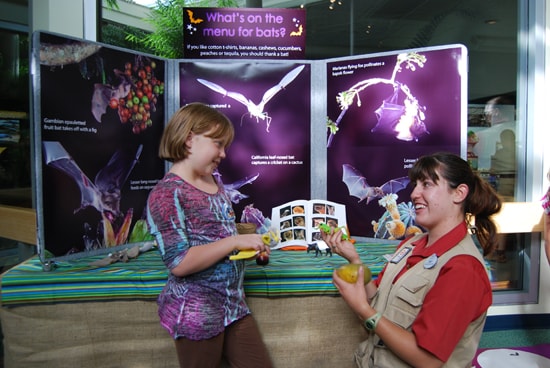Think bats are scary? The scariest thing about bats is not having them around. Do you like bananas, cashews, cotton t-shirts, pickles or peaches? If so, you can thank a bat. From pest control to pollination, bats worldwide are important to people and nature.
Guests visiting Disney’s Animal Kingdom can get to know bats better during a celebration on Halloween (what better day to celebrate bats?) devoted exclusively to this special-not-spooky species.
At Conservation Station, guests can discover what bats like to eat and where they live. By participating in a variety of games and activities, they can learn cool bat facts and what all of us can do to be sure that bats “hang around.” Guests also can meet our bat keepers and find out how we care for the bats (Malayan Flying Foxes and Rodrigues fruit bats) that make their home on the Maharajah Jungle Trek at Disney’s Animal Kingdom.
Did you know?
- Contrary to popular misconceptions, bats are not blind and do not become entangled in human hair.
- As the only mammal capable of true flight, the more than 1,200 species of bats range in size from the world’s smallest mammal, the tiny bumblebee bat that weighs less than a penny, to giant flying foxes with six-foot wingspans.
- Many bat species consume vast quantities of insects, including the most damaging agricultural pests. For example, a single little brown bat can eat more than 1,000 mosquito-sized insects in just one hour.
- Loss of bats increases demand for chemical pesticides. As insect-eating machines, bats save farmers billions of dollars annually.
- From deserts to rainforests, nectar-feeding bats are critical pollinators for a wide variety of plants of great economic and ecological value.
- For 20l2, the Disney Worldwide Conservation Fund is supporting a Bat Conservation International project that is protecting an estimated eight million straw-colored fruit bats in Africa during their seasonal migration.


